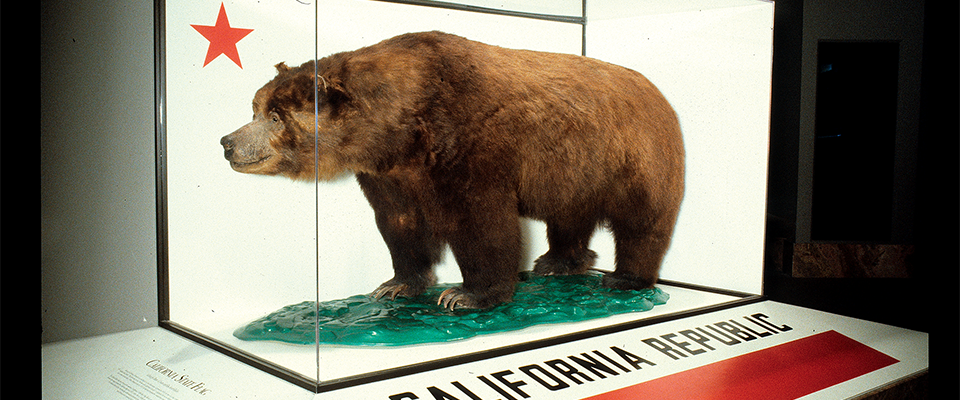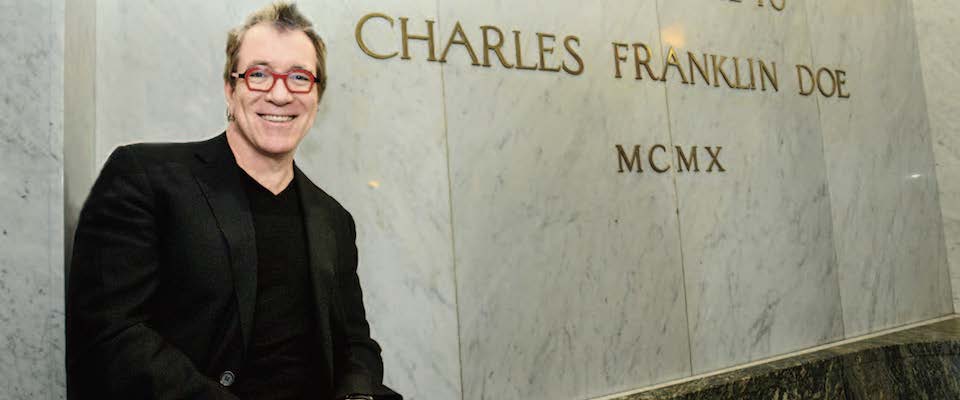In the 3.5 billion-year history of life on planet Earth, a century seems barely mentionable and a decade seems insignificant—but the new revelation of a project involving a Russian billionaire, three UC Berkeley researchers and $100 million just may have laid the groundwork for this decade’s shot at eternal distinction.
Last week, tech billionaire Yuri Milner announced the Breakthrough Initiatives: Earthlings are embarking on the most sensitive, comprehensive and technologically advanced search for extra-terrestrial intelligence ever undertaken. The $100 million, 10-year search represents a reported five-fold increase over current spending and will allow coverage of 10 times more sky. It includes money for training new SETI scientists, developing sophisticated instrumentation, and purchasing more time on the world’s largest telescopes to peruse a million of our closest stars and a hundred of our closest galaxies for intelligent life. The scale of the project is, quite literally, astronomical.
It’s a magical moment, one made possible not only by Milner—whom Berkeley scientists describe as a charismatic, inquisitive physicist by training—but also by the crescendo of technological and astrobiological advances made in recent decades. Luckily for three pioneers of the Search for Extra-Terrestrial Intelligence (SETI) at Berkeley, this special blink of time on Earth just so happens to coincide with their careers.
The Breakthrough Initiatives—first Breakthrough Listen to hunt for incoming signals of life, and later Breakthrough Message to transmit a signal from Earth outward—will fund SETI research worldwide. But UC Berkeley is taking a prominent role. One of the projects leaders is SETI technical guru Dan Werthimer, the man behind Berkeley’s Collaboration for Astronomy Signal Processing and Electronics Research (CASPER) and SETI@home. “I’m half astronomer, half computer engineering nerd,” he says.
Digital processing experts such as Werthimer are as helpful for inter-stellar communication as they are for inter-human communication. To understand why, one only needs to appreciate the amount of data being collected through the Breakthrough Initiative’s telescopes.
“I’m putting all of my other work aside. I’m dedicating my life to this because it’s a once-in-a-lifetime opportunity.”
Here’s how Geoffrey Marcy, an astronomy professor at Berkeley and another leader of the Initiatives, explains the situation: “Suppose I handed you a wire,” he begins, a wire that carries information gathered from, say, one of the project’s two radio telescopes: either the Green Bank Telescope in West Virginia or the Parkes Telescope in New South Wales. (A third telescope—the Lick Observatory in the San Francisco Bay Area—is slotted for use as well, but on the optical spectrum rather than radio.) The number of channels—or, to be more technical, frequencies—these telescopes will listen to numbers around 10 billion. “That’s 10 billion a second! So, what do you do (with the wire)? Well, you need to devise electronics that can handle that; that’s what you do.”
This is Werthimer’s specialty. He says he’s come a long way from “playing with computer chips” as a kid—the two decades he’s spent building high-speed electronics at Berkeley’s CASPER lab are evidence of that—but he contends that Breakthrough Listen will launch him even further. The technology just keeps getting better.
Before radio, when humans were deaf to interstellar messages, we hoped to attract alien attention by building large geometric shapes (occasionally lighting them on fire for added effect). The technological progression in the last few generations gave us the “ears” to listen to radio channels, and then to listen to many of them at a time.
“Forty years ago, we did a search—I thought it was spectacular at the time but now it’s completely laughable,” Werthimer says. “We listened to a hundred channels at once.” The idea of ten billion at that time was unthinkable. Now it’s just the first step.”
“We’re going to build the greatest high speed electronics that have ever been built,” Marcy says.
While Werthimer works on the gadgets for processing the data, Marcy will be devising the strategy behind gathering that data in the first place. Marcy, who grew up in the San Fernando Valley, is more of a astronomy romantic who found himself swept up by the words of Carl Sagan. Between lectures, he has spent the last week in a very terrestrial search. He’s recruiting members for an international advisory committee. So far, he’s communicated with experts from the United States, Russia, China, the Netherlands, the United Kingdom and Japan.
“I’m going to do a lot of, you might say, scientific management: helping the team determine what types of signals to search for and from which stars and galaxies,” he says.
Recent breakthroughs in astrobiology—including discoveries of complex organic molecules, water, and earth-like planets—give Marcy an atmospheric canvas full of opportunity. “We think that there’s tens of billions of Earth-sized planets at lukewarm temperatures just within our Milky Way galaxy alone,” Marcy says. It would seem to be an opportune time to be a SETI researcher.
That hasn’t always been the case, of course. Of all the people who studied under Marcy for a Ph.D., Andrew Siemion was the only one who joined the SETI research community. If Marcy and Werthimer are the wise gurus of the Berkeley triad, Siemion—a small town boy who says he was “blown away by Berkeley”—is the representative of a younger generation following in their footsteps.
And yet, everyone admits that the project may very well find nothing. “We’d be lucky to find anyone, because Earthlings are just getting in the game.”
A native of the small town of Wenatchee in Washington, he recalls having a telescope as a kid but found its images disappointing compared to the pictures in books and on TV. Instead he traces his interest in SETI to the first time he used a modem to call in to a SprintNet X.25 PAD and experienced electronic communication. “This was like a shot of digital heroin—the idea that there was this playground of information out there that I could traverse so easily was just an amazing revelation for me. If there is a galactic, or perhaps intergalactic, internet out there, I want to be on it.”
Siemion became an astrophysicist and has gone on to be director of the Berkeley SETI Research Center. “What I noticed was, over time, the more advanced I got in the field, the more skeptical my peer group became about what I was doing.” He thinks that skepticism stems from the fact that before last week, the high-risk, high-reward nature of SETI research stifled most funding.
“Graduate students are savvy; they know how the research ecosystem works,” Siemion says. When major funding sources such as the National Science Foundation or the National Aeronautics and Space Administration routinely excluded SETI research from their calls for proposals, a lot of students took note—and specialized elsewhere.
That all changes with the Breakthrough Initiatives. Milner’s funding is to be allocated over 10 years, which should guarantee many students a job in the SETI field. In fact, Siemion says that in the last week alone, he already has received a half-dozen emails from students hoping to join his research team.
Which is promising, because Siemion needs all the help he can get. He’ll be gearing up for the day next year when telescopes go live with Breakthrough Listen: That’s when the data will start pouring in to room 339 of Campbell Hall on the UC Berkeley campus, which will serve as a command center for the Green Bank and Parkes telescopes.
Some of that data will flow through the SETI@home network—a worldwide system of users who donate part of their personal computing power to the search for signals. So far, the group has 9 million volunteers and constitutes one of the world’s largest supercomputers. In the coming years, it will need many more.
While Campbell Hall processes data from the radio telescopes, the Automated Planet Finder at the Lick Observatory near San Jose—one of the University of California Observatories—will undertake the broadest search for laser transmissions in history. If nearby civilizations are communicating in the optical spectrum, they may very well use high-powered lasers to do so. If they’re within 25 trillion miles of us, their lasers don’t even have to be that powerful: At that distance, the finder could detect a laser signal as weak as a 100-watt lightbulb.
The Breakthrough Initiatives haven’t begun their conversation with the stars, but they have already sparked conversations on Earth. If SETI researchers were to detect and verify a signal from the stars, every detail of their discovery will be shared with the world. Part of the challenge will be to understand the signal. Then the next question: whether to respond.
“One of the major conversations that we’re going to encourage as part of the Breakthrough Initiatives is the question of what message to send to our cosmic neighbors. If you’re sitting around a table, talking to your friends, can you come up with a message to the stars that would represent all of humanity here on the earth?” says Marcy.
Not surprisingly, he’s been having this conversation frequently these days. “The mere act of discussing the challenge—how to represent humanity—makes (me) feel richer,” he says.
Werthimer, Marcy and Siemion have described this moment in SETI history as a dream, a Columbus-like juncture, and a crescendo of inquiry. Milner is also sharing in the excitement, of course, and hinting that he may back the search for even longer than the next 10 years.
And yet, everyone admits that the project may very well find nothing. “We’d be lucky to find anyone,” says Werthimer, “because Earthlings are just getting in the game.” While the question of whether we are alone goes back to our origins, in terms of a cosmic search, we’re just beginning.
We are, however, eager beginners. “I’m very inspired,” says Marcy. “I’m putting all of my other work aside. I’m dedicating my life to this…because it’s a once-in-a-lifetime opportunity.”




















